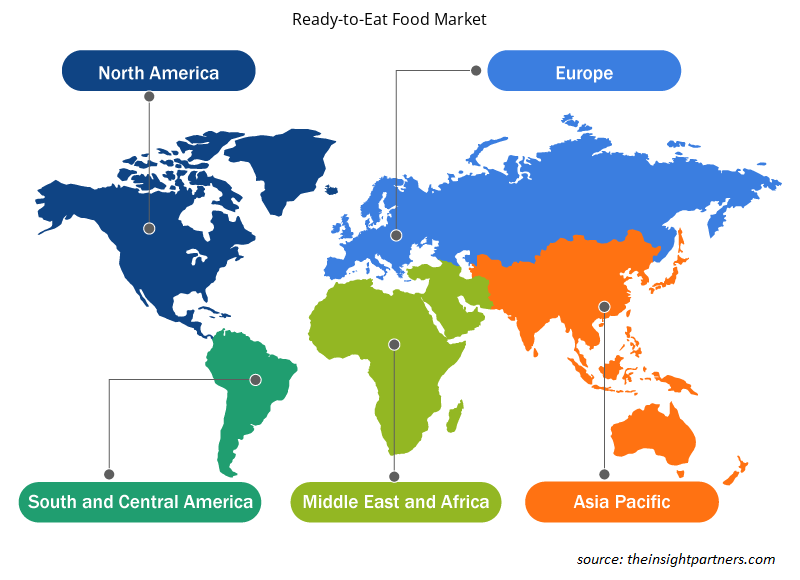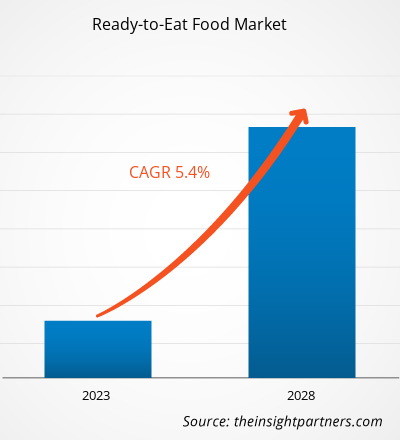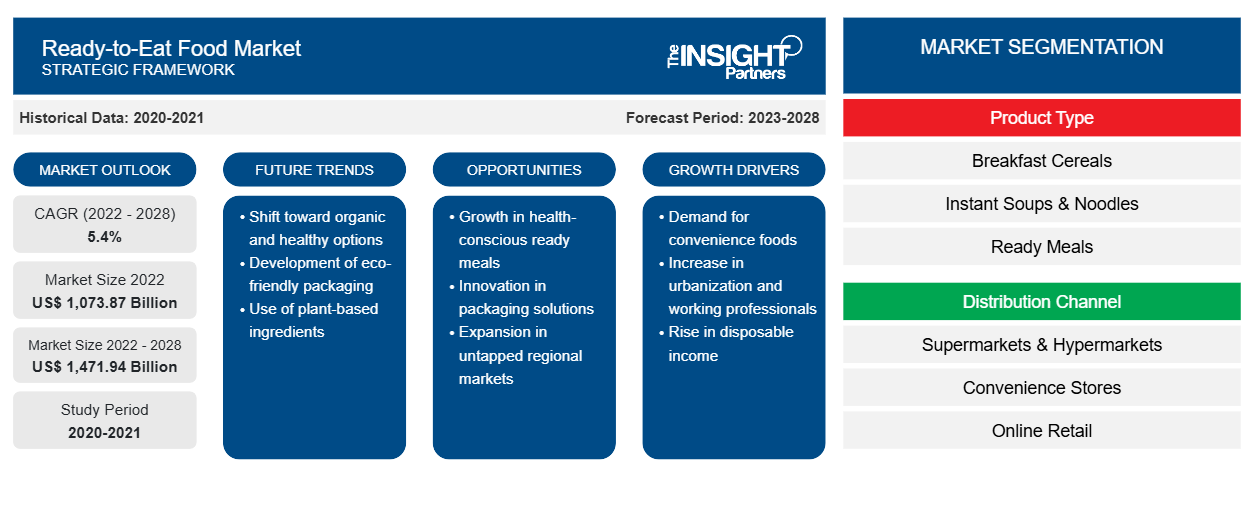[연구보고서] 즉석식품 시장은 2022년 1조 738억 7,000만 달러에서 2028년 1조 4,719억 4,000만 달러로 성장할 것으로 전망되며, 2022년부터 2028년까지 연평균 성장률 5.4%로 성장할 것으로 예상됩니다.
바로 먹을 수 있는 식품은 별도의 준비 없이 소비할 수 있는 다양한 가공 및 포장 식품으로 구성됩니다. 재료는 씻고, 조리하고, 가공하고, 직접 소비할 수 있도록 용기에 포장합니다. 일반적인 RTE 식품에는 인스턴트 수프, 구운 식품, 디저트, 즉석식품이 있습니다. 이러한 제품에는 다양한 추출물, 산, 향미료, 감미료 , 산화방지제, 방부제가 풍부하게 들어 있습니다. 이는 소비자에게 엄청난 편의성을 제공하는 동시에 식사 준비 시간을 줄이고 제품의 유통기한을 늘리고 비용 효율성을 높이고 부패를 최소화하는 데 도움이 됩니다.
아시아 태평양 지역은 2020년에 바로 먹을 수 있는 식품 시장 에서 가장 큰 점유율을 차지했고 , 중동 및 아프리카와 같은 다른 개발 도상국은 예측 기간 동안 상당히 성장할 것으로 예상됩니다. 바로 먹을 수 있는 식품 시장에서 활동하는 주요 업체는 개발 도상국의 근로 인구 증가와 사람들의 바쁜 라이프스타일로 인해 아시아 태평양 전역에서 사업을 확장하고 있습니다. 개인은 이동 중이나 집 밖에서 음식을 소비하는 것을 점점 더 선택하고 있습니다.
게다가, 수많은 연구에 따르면, 다국적 식품 및 음료 기업(TFBC)이 식품 시스템과 일반적인 소비를 형성하여 가공 식품의 가용성, 바람직성, 가격, 그리고 궁극적으로 소비를 변화시켰다는 사실이 밝혀졌습니다. 즉석식품 시장의 성장은 중산층 국가에서 두드러지게 관찰되었습니다.
귀하의 요구 사항에 맞게 이 보고서를 사용자 정의하세요
이 보고서의 일부 또는 국가 수준 분석, Excel 데이터 팩을 포함하여 모든 보고서에 대한 사용자 정의를 무료로 받을 수 있으며 신생 기업 및 대학을 위한 훌륭한 혜택과 할인 혜택을 이용할 수 있습니다.
- 이 보고서의 주요 시장 동향을 알아보세요.이 무료 샘플에는 시장 동향부터 추정 및 예측까지 다양한 데이터 분석이 포함됩니다.
COVID-19 팬데믹이 즉석식품 시장에 미치는 영향
COVID-19 팬데믹은 2020년 초 많은 분야에 전례 없는 어려움을 가져왔습니다. 봉쇄, 국경 제한, 여행 금지, 제조 중단 및 WHO 지침에 따라 정부와 국가 보건부가 시행한 기타 안전 조치로 인해 제조 운영이 방해를 받았습니다. 반면 COVID-19 발병은 소비자와 소매업체가 선반이 긴 편의 식품을 비축함에 따라 즉석식품 시장에 긍정적인 영향을 미쳤습니다. 또한 면역력을 높이기 위해 더 건강한 포장 식품 및 음료 제품을 찾는 소비자들은 COVID-19의 영향에 경각심을 느꼈습니다. 그런 다음 RTE 제품 제조업체는 단백질과 기타 영양가가 풍부한 건강하고 영양가 있는 제품에 집중했고, 이는 팬데믹 동안 즉석식품에 대한 수요를 자극했습니다.
시장 통찰력
밀레니얼 세대의 편의식품에 대한 강한 선호도가 시장 성장을 견인
고품질의 편의식품 소비가 증가하고 있으며, 이는 현재 식품 산업의 가장 큰 트렌드 중 하나입니다. RTE 제품과 같은 편의식품은 소비자가 식사 준비 및 조리, 소비 및 식사 후 활동과 관련된 시간과 노력을 절약할 수 있도록 합니다. 이 식품 세그먼트의 개발 원천에는 사회적 변화의 수, 특히 소규모 가구의 증가와 전 세계적으로 증가하는 밀레니얼 세대가 포함된다고 합니다. 밀레니얼 세대의 바쁜 업무 일정 때문에 지루한 작업에 시간을 낭비하기보다는 효율적으로 시간을 보내는 것을 선호합니다. 그들은 편의성에 돈을 쓸 가능성이 더 큽니다. 따라서 그들은 구운 제품, 간식 및 유제품과 같은 RTE 제품을 점점 더 선호하여 바로 먹을 수 있는 식품 시장을 더욱 촉진합니다.
제품 유형 통찰력
제품 유형에 따라 즉석식품 시장은 아침 시리얼, 인스턴트 수프 및 국수, 즉석 식사, 간식, 제빵류 및 제과류, 기타로 세분화됩니다. 다른 즉석식품 세그먼트는 예측 기간 동안 가장 큰 점유율을 기록할 것으로 예상됩니다. 다른 유형에는 유제품, 디저트, 스프레드, 소스 및 딥이 있습니다. RTE 유제품에는 아이스크림, 요구르트, 포장된 풍미 우유 및 치즈가 있습니다. 건강을 의식하는 소비자는 대부분 유제품을 소비하는데, 일반 유제품은 뼈와 장 건강을 개선하고 심혈관 질환(CVD) 및 2형 당뇨병의 위험을 줄이기 때문입니다. 사람들이 전통적인 생활 방식에서 전환하고 현대적인 라이프스타일을 채택함에 따라 가공 및 포장 소스와 딥의 인기가 높아져 즉석식품 시장의 성장이 촉진되었습니다.
바로 먹을 수 있는 식품 시장 지역 통찰력
Insight Partners의 분석가들은 예측 기간 동안 바로 먹을 수 있는 식품 시장에 영향을 미치는 지역적 추세와 요인을 철저히 설명했습니다. 이 섹션에서는 북미, 유럽, 아시아 태평양, 중동 및 아프리카, 남미 및 중미의 바로 먹을 수 있는 식품 시장 세그먼트와 지리에 대해서도 설명합니다.

- 즉석식품 시장에 대한 지역별 특정 데이터 얻기
즉석식품 시장 보고서 범위
| 보고서 속성 | 세부 |
|---|---|
| 2022년 시장 규모 | 1조 738억 7천만 달러 |
| 2028년까지 시장 규모 | 1조 4,719억 4,000만 달러 |
| 글로벌 CAGR (2022-2028) | 5.4% |
| 역사적 데이터 | 2020-2021 |
| 예측 기간 | 2023-2028 |
| 다루는 세그먼트 | 제품 유형별
|
| 포함된 지역 및 국가 | 북아메리카
|
| 시장 선도 기업 및 주요 회사 프로필 |
|
바로 먹을 수 있는 식품 시장 참여자 밀도: 비즈니스 역학에 미치는 영향 이해
바로 먹을 수 있는 식품 시장 시장은 소비자 선호도의 변화, 기술 발전, 제품의 이점에 대한 인식 증가와 같은 요인으로 인해 최종 사용자 수요가 증가함에 따라 빠르게 성장하고 있습니다. 수요가 증가함에 따라 기업은 제품을 확장하고, 소비자의 요구를 충족하기 위해 혁신하고, 새로운 트렌드를 활용하여 시장 성장을 더욱 촉진하고 있습니다.
시장 참여자 밀도는 특정 시장이나 산업 내에서 운영되는 회사나 기업의 분포를 말합니다. 주어진 시장 공간에 얼마나 많은 경쟁자(시장 참여자)가 존재하는지 그 규모나 총 시장 가치에 비해 나타냅니다.
즉석식품 시장에서 운영되는 주요 회사는 다음과 같습니다.
- 네슬레 SA
- 코나그라 브랜드 주식회사
- 크래프트 하인츠 회사
- 제너럴 밀스 주식회사
- 캠벨 수프 회사
면책 조항 : 위에 나열된 회사는 어떤 특별한 순서에 따라 순위가 매겨지지 않았습니다.

- 바로 먹을 수 있는 식품 시장의 주요 업체 개요를 알아보세요
유통 채널 통찰력
유통 채널을 기준으로, 즉석식품 시장은 슈퍼마켓 및 하이퍼마켓, 편의점, 온라인 소매 등으로 세분화되었습니다. 온라인 소매 부문은 예측 기간 동안 즉석식품 시장에서 가장 높은 CAGR을 기록할 것으로 예상됩니다. 온라인 소매는 사용자에게 편리한 쇼핑 경험을 제공하고, 그 다음으로 간소화된 제품 배달을 제공합니다. 온라인 소매점은 광범위한 제품을 엄청난 할인으로 제공합니다. 또한 소비자는 원하는 제품을 원격으로 편리하게 구매할 수 있습니다.
즉석식품 시장에서 활동하는 주요 기업은 Nestlé SA, Conagra Brands Inc., The Kraft Heinz Company, General Mills Inc., CAMPBELL SOUP COMPANY, MTR Foods Pvt Ltd., Hormel Foods Corporation, Tyson Foods, Inc., JBS SA, The Kellogg Company입니다. 이러한 기업은 새로운 소비자 트렌드를 충족하고 규제 프레임워크를 준수하기 위해 건강 위험이 낮은 제품을 개발하는 데 참여합니다. 이들은 합병 및 인수, 사업 확장, 파트너십에 참여하여 시장 점유율을 확대합니다.
스포트라이트 보고서
- 즉석식품 시장의 진보적 산업 동향은 기업이 효과적인 장기 전략을 개발하는 데 도움이 됩니다.
- 선진 및 개발도상 시장에서 성장을 확보하기 위해 채택된 사업 성장 전략
- 2019년부터 2028년까지의 즉석식품 시장 정량분석
- 즉석식품에 대한 세계 수요 추산
- 산업에서 운영되는 구매자와 공급자의 효율성을 설명하기 위한 포터의 5가지 힘 분석
- 경쟁 시장 시나리오를 이해하기 위한 최근 개발
- 시장 동향 및 전망, 그리고 즉석식품 시장 성장을 지배하는 요인들
- 상업적 관심을 뒷받침하는 시장 전략을 강조하여 의사 결정 프로세스를 지원하고 시장 성장을 이끕니다.
- 다양한 노드에서의 즉석식품 시장 규모
- 시장과 RTE 제품 산업 역학에 대한 자세한 개요 및 세분화
- 성장 기회가 유망한 다양한 지역의 성장 규모
- 과거 분석(2년), 기준 연도, CAGR을 포함한 예측(7년)
- PEST 및 SWOT 분석
- 시장 규모 가치/거래량 - 글로벌, 지역, 국가
- 산업 및 경쟁 환경
- Excel 데이터세트
최근 보고서
관련 보고서
사용 후기
구매 이유
- 정보에 기반한 의사 결정
- 시장 역학 이해
- 경쟁 분석
- 고객 인사이트
- 시장 예측
- 위험 완화
- 전략 기획
- 투자 타당성 분석
- 신흥 시장 파악
- 마케팅 전략 강화
- 운영 효율성 향상
- 규제 동향에 발맞춰 대응























 무료 샘플 받기 - 즉석식품 시장
무료 샘플 받기 - 즉석식품 시장